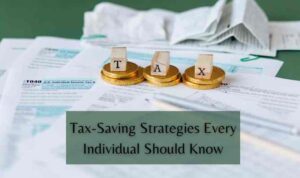Investing for Beginners takes center stage, beckoning readers into a world of financial growth and opportunity. Dive into the basics of investing and watch your money work for you.
Whether you’re a high school student looking to start early or a beginner eager to explore the world of investments, this guide will equip you with the knowledge needed to kickstart your financial journey.
Understanding Investing

Investing is the act of putting money into financial schemes, shares, property, or a commercial venture with the expectation of achieving a profit. It is crucial for beginners to understand investing as it allows individuals to grow their wealth over time and achieve financial goals.
Saving vs. Investing
Saving involves setting aside money in a safe place like a savings account, while investing involves putting money into assets that have the potential to earn a higher return. Unlike saving, investing carries risks but also offers the potential for higher rewards in the long run.
Benefits of Starting to Invest Early
Starting to invest early in life allows individuals to take advantage of compound interest, where the returns on investments are reinvested to generate more returns over time. This compounding effect can significantly grow wealth over the long term and help achieve financial independence.
Risks Associated with Investing
Investing comes with risks such as market fluctuations, economic downturns, and company-specific risks. To manage these risks, beginners should diversify their investments across different asset classes, do thorough research before investing, and consider seeking advice from financial professionals.
Types of Investments
Investing involves putting money into financial assets with the expectation of earning a profit. There are several common types of investments that individuals can consider, each with its own risk levels and potential returns.
Stocks
Stocks represent ownership in a company and can be bought and sold on stock exchanges. Investing in stocks can offer high potential returns but also comes with high risk, as stock prices can be volatile.
Bonds, Investing for Beginners
Bonds are debt securities issued by governments or corporations. When an individual buys a bond, they are essentially lending money to the issuer in exchange for periodic interest payments. Bonds are generally considered less risky than stocks but offer lower potential returns.
Mutual Funds
Mutual funds pool money from multiple investors to invest in a diversified portfolio of stocks, bonds, or other securities. This allows investors to benefit from professional management and diversification, reducing risk.
Real Estate
Investing in real estate involves purchasing property with the goal of generating rental income or capital appreciation. Real estate investments can provide a steady income stream but may require significant capital and management.
Diversification is a key strategy in investing that involves spreading your investments across different asset classes to reduce risk. By diversifying your portfolio, you can minimize the impact of a decline in any one investment.
For beginners looking to start investing with small amounts, options like investing in low-cost index funds or using investing apps that allow for fractional share purchases can be a good way to get started. It’s important to do thorough research and consider your risk tolerance and investment goals before diving into the world of investing.
Setting Investment Goals

Setting clear investment goals is crucial for a successful financial journey. It provides a roadmap for your investments, helping you stay focused and motivated. By establishing specific objectives, you can make informed decisions and track your progress effectively.
Determining Risk Tolerance and Investment Timeline
Determining your risk tolerance is essential to ensure that you are comfortable with the level of uncertainty in your investments. It involves assessing how much volatility you can withstand in your portfolio before feeling uncomfortable. Your investment timeline, or the duration you plan to hold your investments, is also vital in determining the appropriate risk level for your portfolio.
- Assess your financial situation, including income, expenses, and existing assets, to understand your risk tolerance.
- Consider your investment goals and time horizon to align your risk tolerance with your objectives.
- Consult a financial advisor to help you evaluate your risk tolerance and investment timeline accurately.
Aligning Investments with Financial Goals
To align your investments with specific financial goals, you need to match the investment strategy with the objective you want to achieve. Whether you are saving for retirement, buying a house, or funding your child’s education, each goal requires a tailored investment approach.
- Divide your financial goals into short-term, medium-term, and long-term objectives to create a diversified investment portfolio.
- Select investment vehicles that align with each goal, such as stocks for long-term growth and bonds for stability.
- Regularly review and adjust your investments to ensure they remain in line with your evolving financial goals.
Adjusting Investment Goals as Financial Situations Change
Financial situations can change unexpectedly, requiring adjustments to your investment goals. Whether you experience a windfall, job loss, or unexpected expenses, it is essential to adapt your goals to reflect your current circumstances.
- Reassess your investment goals regularly to accommodate any changes in your financial situation or personal priorities.
- Modify your investment strategy accordingly to realign your portfolio with your revised objectives.
- Seek professional advice when significant life events or economic shifts impact your financial goals.
Investment Strategies: Investing For Beginners
Investment strategies are crucial for success in the financial markets. Understanding different approaches can help you make informed decisions and maximize your returns.
Active vs. Passive Investing
Active investing involves frequent buying and selling of securities in an attempt to outperform the market. This strategy requires diligent research and monitoring of investments. On the other hand, passive investing aims to replicate the performance of a specific market index by holding a diversified portfolio of securities. It typically involves lower fees and less frequent trading.
Dollar-Cost Averaging
Dollar-cost averaging is a strategy where you invest a fixed amount of money at regular intervals, regardless of market conditions. This approach helps reduce the impact of market volatility on your investments over time. By consistently buying in both up and down markets, you can potentially lower the average cost of your investments.
Buy and Hold Strategy
The “buy and hold” strategy involves purchasing investments with the intention of holding onto them for the long term, regardless of short-term market fluctuations. This approach is based on the belief that over time, the market tends to rise, and holding onto quality investments can lead to significant returns. It requires patience, discipline, and a long-term perspective.
Staying Informed
To stay informed about market trends and investment opportunities, consider following financial news outlets, reading reputable investment publications, and utilizing online resources. Additionally, attending seminars, webinars, and workshops can help broaden your knowledge and keep you updated on the latest developments in the financial world.



